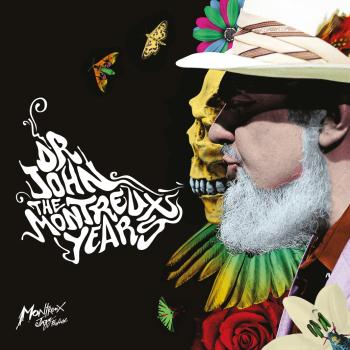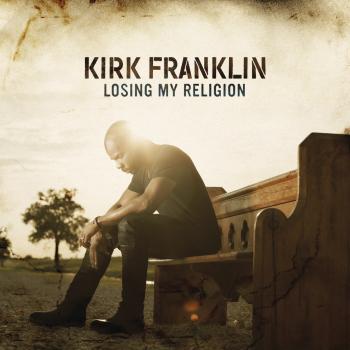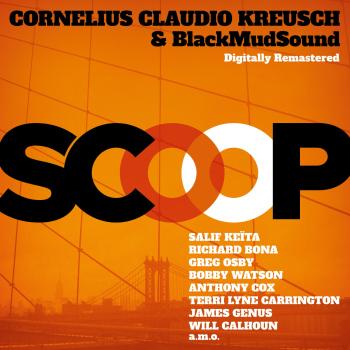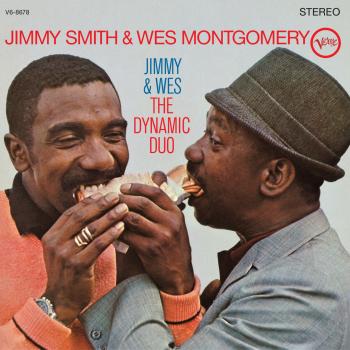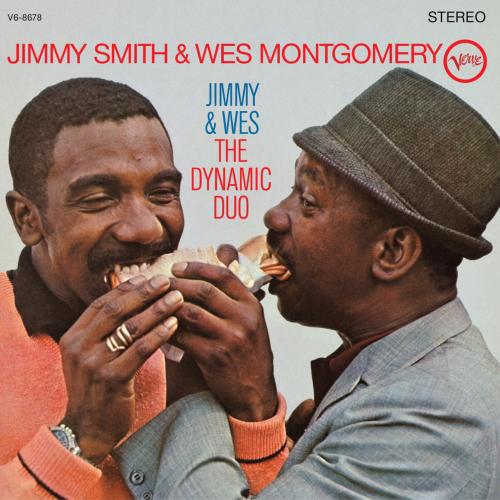
Jimmy And Wes (The Dynamic Duo) (Remastered) Jimmy Smith & Wes Montgomery
Album info
Album-Release:
1966
HRA-Release:
14.11.2025
Album including Album cover
I`m sorry!
Dear HIGHRESAUDIO Visitor,
due to territorial constraints and also different releases dates in each country you currently can`t purchase this album. We are updating our release dates twice a week. So, please feel free to check from time-to-time, if the album is available for your country.
We suggest, that you bookmark the album and use our Short List function.
Thank you for your understanding and patience.
Yours sincerely, HIGHRESAUDIO
- 1 Down By The Riverside (2025 Remastered) 09:58
- 2 Night Train (2025 Remastered) 06:45
- 3 James And Wes (2025 Remastered) 08:11
- 4 13 (Death March) (2025 Remastered) 05:19
- 5 Baby, It's Cold Outside (2025 Remastered) 05:55
Info for Jimmy And Wes (The Dynamic Duo) (Remastered)
Jimmy Smith & Wes Montgomery: The Dynamic Duo is a 1966 collaborative album by American jazz guitarist Wes Montgomery and electric organist Jimmy Smith, with arrangements by Oliver Nelson. It is frequently listed among Jimmy Smith's best albums!
During three days in September 1966, two jazz heavyweights — both arguably at the peak of their respective powers — joined forces in Rudy Van Gelder's famous New Jersey studio to record a scintillating collaboration for Verve Records. They were Pennsylvanian organ maestro Jimmy Smith and Indianapolis guitar sensation Wes Montgomery. At that time, both musicians were beginning to expand their audiences and appear on the radar of pop music fans: Smith via several US hit singles, including the Top 30 smash "Walk On The Wild Side," and Montgomery with his popular instrumental cover of R&B group Little Anthony & The Imperials' "Goin' Out Of My Head."
For producer and Verve executive Creed Taylor, combining the talents of two of the top-selling jazz artists on his label's roster was a no-brainer. Taylor brought in an arranger who had worked with both Smith and Montgomery individually: Oliver Nelson, an alto saxophonist and recording artist in his own right who had found greater fame as an arranger/conductor and would go on to work on TV and movie soundtracks.
Although some purist jazz fans were hostile to Smith and Montgomery receiving orchestral backings, believing that the pair were cheapening their talent for commercial gain, Creed Taylor felt it was the only way he could get jazz on the radio.
Scoring for a 13-piece brass and woodwind ensemble that included several noted jazz musicians, including saxophonist Phil Woods and trumpeter Clark Terry, Nelson's sophisticated backdrops for Smith and Montgomery ranged from a swaggering big band number ("Down By The Riverside") to a finger-clicking bluesy shuffle ("Night Train"), and a cinematic mood piece called "13 (Death March)."
Nelson's charts didn't overwhelm the pair or prevent some exciting jazz improv from taking place. The horns often featured on the intros and outros, leaving space for Smith and Montgomery to show their flair — and on the exceptional "James & Wes" (a Smith-penned musical portrait of the two men), the brass dropped out to allow the album's two protagonists to serve up a cooking groove in a quartet setting with Grady Tate on drums and Ray Barretto playing congas.
The album ended on a seasonal note with a jingly, sleigh bell-driven version of Frank Loesser's "Baby, It's Cold Outside"; the perennially popular much-covered Christmas tune first recorded in 1949 that has often been performed as a duet. Smith's organ and Montgomery's guitar create a conversational-style musical dialogue before they each embark on virtuosic solos.
Although Jimmy Smith and Wes Montgomery would never meet again inside a recording studio, the three days they spent together back in September 1966 achieved remarkable results, producing one of the best jazz albums of the 1960s.
Jimmy Smith, Hammond organ
Wes Montgomery, guitar
Grady Tate, drums
Ray Barretto, conga (tracks 3–6)
Bob Ashton, reeds
Danny Bank, reeds
Jerry Dodgion, reeds
Jerome Richardson, reeds
Phil Woods, reeds
Clark Terry, trumpet, flugelhorn
Ernie Royal, trumpet
Jimmy Maxwell, trumpet
Joe Newman, trumpet
Jimmy Cleveland, trombone
Melba Liston, trombone
Quentin Jackson, trombone
Tony Studd, bass trombone (tracks 1–2)
Dick Hixson, bass trombone (track 4)
Richard Davis, bass
Oliver Nelson, arranger, conductor
Digitally remastered
Jimmy Smith
ruled the Hammond organ in the ’50s and ’60s. He revolutionized the instrument, showing it could be creatively used in a jazz context and popularized in the process. His Blue Note sessions from 1956 to 1963 were extremely influential and many, like 1960’s Back at the Chicken Shack and 1958 ‘s The Sermon, are classics. Smith turned the organ into almost an ensemble itself. He played walking bass lines and chordal accompaniment with his left hand, while solos were played with his right hand. A booming, funky presence punctuated every song, particularly the up-tempo cuts. Smith turned the fusion of R&B, blues, and gospel influences with bebop references and devices into a jubilant, attractive sound that many others immediately absorbed before following in his footsteps. Smith initially learned piano both from his parents and on his own. He attended the Hamilton School of Music in 1948, and Ornstein School of Music in 1949 and 1950 in Philadelphia. Smith began playing the Hammond in 1951, and soon earned a great reputation that followed him to New York, where he debuted at the Café Bohemia. A Birdland date and 1957 Newport Jazz Festival appearance launched Smith’s career. His Blue Note recordings included both trio recordings and superb collaborations with Kenny Burrell, Lee Morgan, Lou Donaldson, Tina Brooks, Jackie McLean, Ike Quebec, and Stanley Turrentine, among others. Smith scored more hit albums on Verve from 1963 to 1972, many of them featuring big bands and using fine arrangements from Oliver Nelson. These included the excellent Walk on the Wild Side and Jimmy & Wes: The Dynamic Duo, a collaboration with guitarist Wes Montgomery. His ’70s output was quite spotty, though Smith didn’t stop touring, visiting Israel and Europe in 1974 and 1975. He and his wife opened a club in Los Angeles in the mid-’70s. Smith resumed touring in the early ’80s and continued wowing audiences around the world. He re-signed with Blue Note in 1985, and has done more representative dates for them and Milestone in the ’90s. After a five-year layoff, Smith returned in early 2001 with the blues projects Fourmost Return and Dot Com Blues. He remained a fixture in both small jazz clubs and large festivals until his untimely passing in February of 2005. (Ron Wynn & Bob Porter, AMG)
Wes Montgomery
was born in 1923 in Indianapolis, Indiana. Wes was first introduced to guitar when his older brother, Monk Montgomery, bought him a four stringed guitar. He would eventually relocate to Akron, Ohio to attend high school. He started his music career in the mid 40’s, playing with the bandleader Lionel Hampton. During his time with Hampton, he would frequently fly back to Indianapolis to be with his family. He also held a day job as a welder, and would play gigs at night. Wes Montgomery eventually signed to Riverside Records where he would turn in some of his most seminal recordings. His style was one of the most unique guitar styles at the time. He would pluck the strings with his thumb, giving his tone a warm, muted quality, and he would extensively use octaves to give a deep sense of atmosphere. A few notable musicians that Wes played with are: Wynton Kelly, Paul Chambers, Jimmy Cobb, Johnny Griffin, Tommy Flanagan, Percy Heath, Eddie Higgins, and Charles Mingus.
This album contains no booklet.

